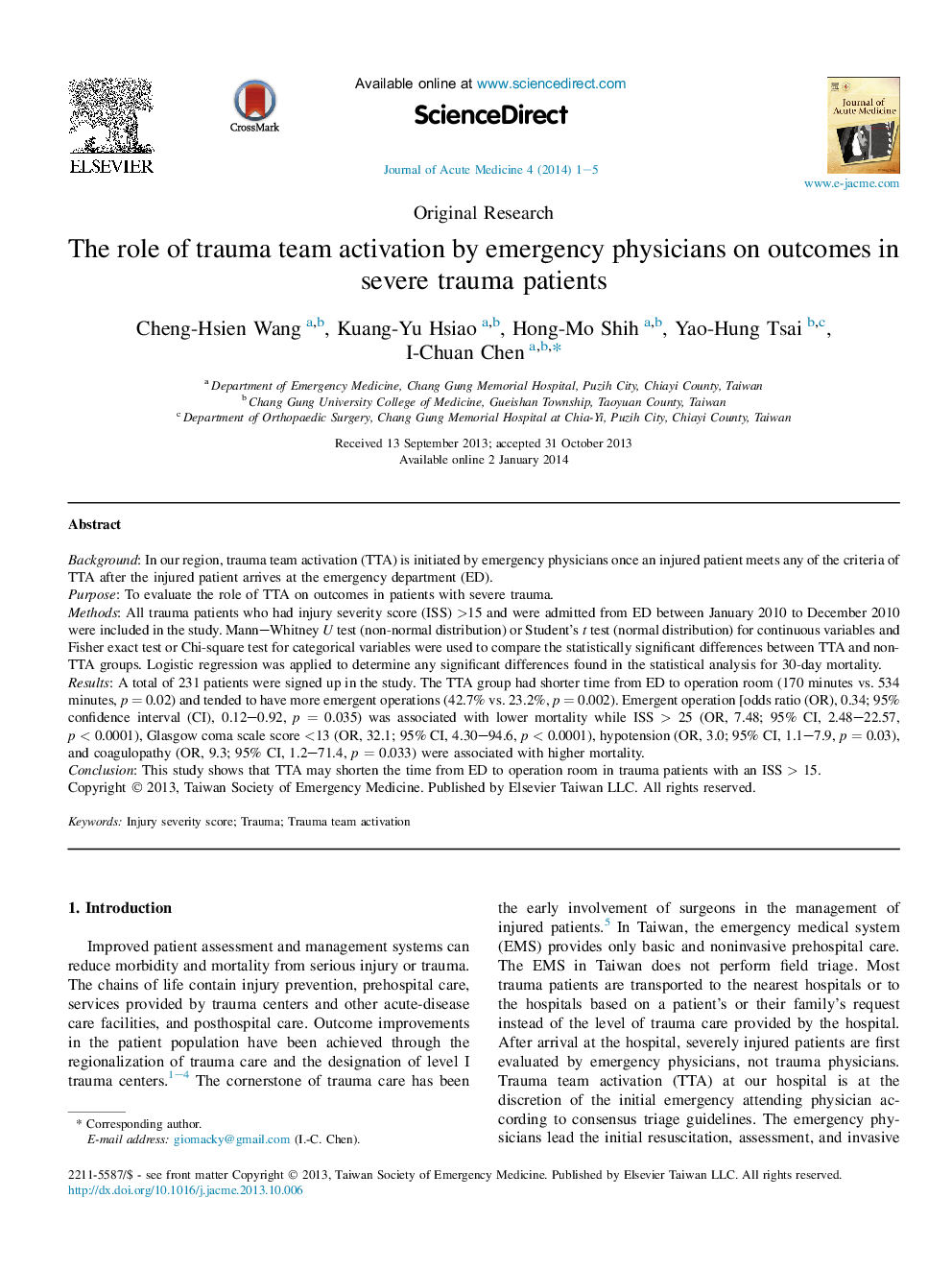| Article ID | Journal | Published Year | Pages | File Type |
|---|---|---|---|---|
| 3245021 | Journal of Acute Medicine | 2014 | 5 Pages |
BackgroundIn our region, trauma team activation (TTA) is initiated by emergency physicians once an injured patient meets any of the criteria of TTA after the injured patient arrives at the emergency department (ED).PurposeTo evaluate the role of TTA on outcomes in patients with severe trauma.MethodsAll trauma patients who had injury severity score (ISS) >15 and were admitted from ED between January 2010 to December 2010 were included in the study. Mann–Whitney U test (non-normal distribution) or Student's t test (normal distribution) for continuous variables and Fisher exact test or Chi-square test for categorical variables were used to compare the statistically significant differences between TTA and non-TTA groups. Logistic regression was applied to determine any significant differences found in the statistical analysis for 30-day mortality.ResultsA total of 231 patients were signed up in the study. The TTA group had shorter time from ED to operation room (170 minutes vs. 534 minutes, p = 0.02) and tended to have more emergent operations (42.7% vs. 23.2%, p = 0.002). Emergent operation [odds ratio (OR), 0.34; 95% confidence interval (CI), 0.12–0.92, p = 0.035) was associated with lower mortality while ISS > 25 (OR, 7.48; 95% CI, 2.48–22.57, p < 0.0001), Glasgow coma scale score <13 (OR, 32.1; 95% CI, 4.30–94.6, p < 0.0001), hypotension (OR, 3.0; 95% CI, 1.1–7.9, p = 0.03), and coagulopathy (OR, 9.3; 95% CI, 1.2–71.4, p = 0.033) were associated with higher mortality.ConclusionThis study shows that TTA may shorten the time from ED to operation room in trauma patients with an ISS > 15.
